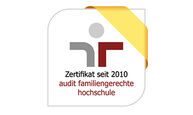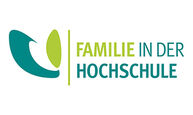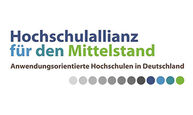The North Rhine-Westphalian Minister of Culture and Science, Ina Brandes (CDU), visited the Krefeld West campus of the Hochschule Niederrhein (HSNR) today. She informed herself about the long tradition of the Faculty of Design and got an idea of current research projects of the HSNR at the Institute of Surface Technology (HIT). In addition, the minister exchanged views at length with the university's presidium on current higher education policy issues.
"The search for specialists is one of the most pressing challenges in Germany. The work of the universities of applied sciences is so incredibly important for our economy because they train young scientists with direct practical relevance. This benefits young people and North Rhine-Westphalia as a location for science and business," said Minister Ina Brandes during the visit.
University President Dr. Thomas Grünewald was delighted with the minister's visit: "Today we were able to show what we succeed in doing particularly well at the Hochschule Niederrhein: combining tradition and modernity. On the one hand, our traditional Faculty of Design, on the other hand, the ultra-modern Institute for Surface Technology. We, the presidium of the university, had very interesting and constructive discussions with the minister."
The Faculty of Design emerged from the Krefeld Werkkunstschule in 1971. Among others, the photographer and filmmaker Peter Lindbergh, the cameraman Michael Ballhaus and the artist Markus Lüpertz studied at this predecessor institution. Most recently, the Faculty of Design was honored by the Art Directors Club Deutschland (ADC) as the creative number 1 in all of North Rhine-Westphalia. The ADC is made up of around 800 leading figures in creative communication, including designers, journalists, architects, illustrators, directors, composers and producers.
The HIT paves the way to the digital future of chemistry. With a state-of-the-art chemistry laboratory, a piece of Industry 4.0 has been realized that benefits small and medium-sized companies in the region. There, innovative coatings, adhesives and 3D printing materials are produced thanks to the use of automation and artificial intelligence.
With the intelligent high-throughput plant, new formulations for paints, coatings and adhesives are developed not only faster than before, but above all more sustainably with properties optimally adapted to the respective application and transferred into market-ready products. Artificial intelligence is used for this purpose: While chemists work on issues such as how renewable raw materials can be formulated into innovative products and for new applications, routine laboratory tasks are performed by an automated, intelligently controlled system of robots.
The facility is set up on an area of 250 square meters. The purpose-built functional hall is operated at a constant climate (22 to 23 degrees Celsius at 50% humidity). It is capable of performing up to 150 experiments per day. The aim is to reduce the number of experiments required while at the same time using as few individual chemicals as possible.




















